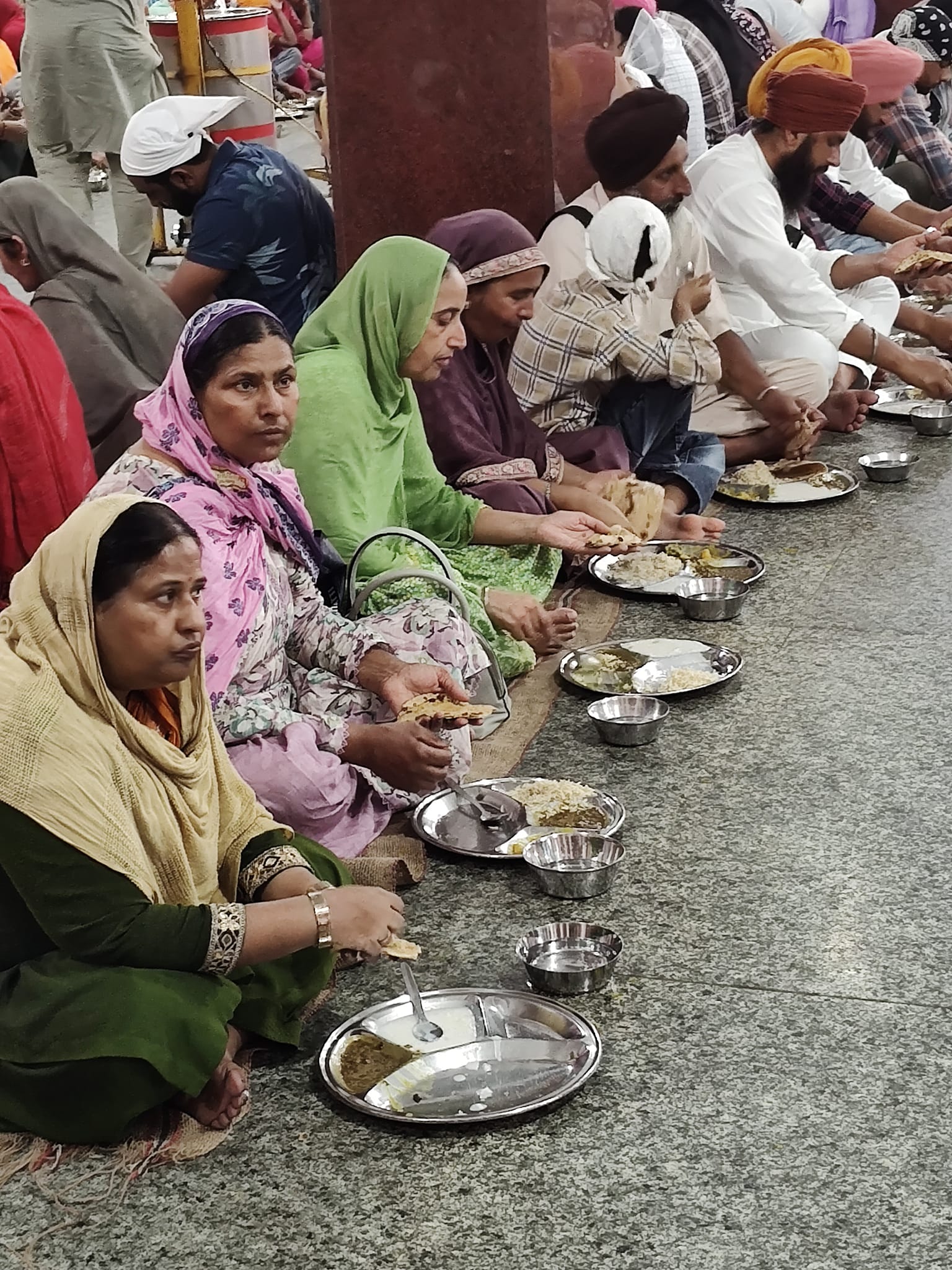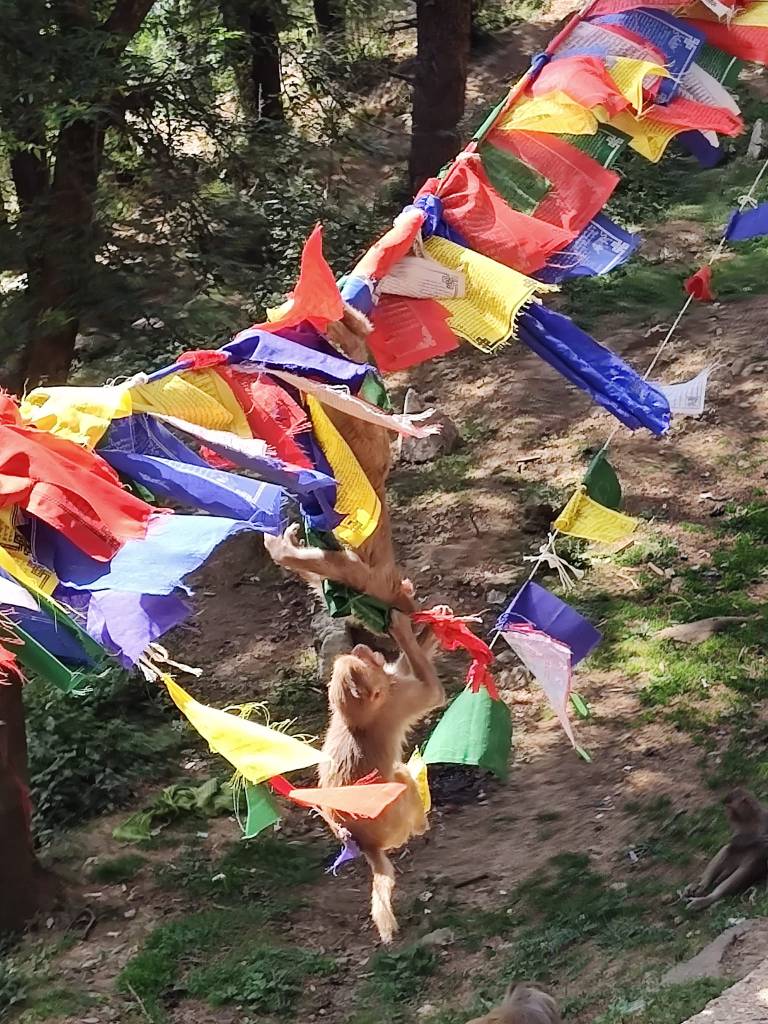 I was a soul in need of wanderlust, seriously seeking out unstructured travel yet wanting to combine a trip with a tour to enjoy the best of both worlds when I decided to go to Southern Asia. I traveled for two months and explored two different areas of South Central India, three weeks in Sri Lanka, and two weeks in Nepal, with the trip ending in Northern India. Every trip awakens my indebtedness to travel for enriching me. On this trip I included Overseas Adventure Travel, and their trip Nepal and the Mystical Himalayas. Their Northern India post trip additionally sparked my appreciation as a microcosm of an unexpected “Asian fusion” in the region. My travel plans exceeded anything I could have ever imagined, as my blended trip took me to a part of Asia that had itself been combined, geographically, culturally, spiritually, gastronomically, and every other way possible. Oddly, I felt as if I had been in India the entire time.
I was a soul in need of wanderlust, seriously seeking out unstructured travel yet wanting to combine a trip with a tour to enjoy the best of both worlds when I decided to go to Southern Asia. I traveled for two months and explored two different areas of South Central India, three weeks in Sri Lanka, and two weeks in Nepal, with the trip ending in Northern India. Every trip awakens my indebtedness to travel for enriching me. On this trip I included Overseas Adventure Travel, and their trip Nepal and the Mystical Himalayas. Their Northern India post trip additionally sparked my appreciation as a microcosm of an unexpected “Asian fusion” in the region. My travel plans exceeded anything I could have ever imagined, as my blended trip took me to a part of Asia that had itself been combined, geographically, culturally, spiritually, gastronomically, and every other way possible. Oddly, I felt as if I had been in India the entire time.
In the unexpectedly small but delightful state of Punjab, India, I saw a complex microcosm of what had taken me two months to explore. Punjab provided vastly diverse experiences from what I had encountered prior, all of which were memorable, some the same, yet uniquely different. We no sooner arrived in Amritsar, Punjab when we were told we had a half hour before we went to the Indian/Pakistan border for their ritual, the Lowering of the Flags Ceremony, at the Attari-Wagah border. It is more of a military parade with significant Bollywood dancing followed by organized cheerleading with everyone shouting nationalist slogans and waving flags. It has been taking place daily since 1959. The Pakistanis were on their side of the border, with flags of both countries raised at the start of the event and lowered simultaneously at the end. It was quite dramatic at times if not overly so and a bit long, but it was interesting geographically and even geo politically.
India is very neutral in world affairs except as it pertains directly to the regional conflicts they have had such as with Pakistan. However, this ceremony is conspicuous in large measure by goose stepping, helmeted soldiers in equal acts of defiance towards each other during the parade, then ultimately cooperation. It took cooperation, after all, to put this show together. The Border Security Force controls proceedings on the Indian side. The event begins every evening at sunset when the parade starts with helmeted Indian soldiers accompanied by a dog first appearing and marching towards the closed border. Eventually after more soldiers appear, the gates to the Pakistan border open, and both sides raise arms to each other in a show of both military defiance, strength, and greeting. Then of course, in complete cooperation with each other after showing each other their might, the flags lower on both sides, and the border gates close once again.
 We saw a completely different and pacifistic side of Punjab the following day at the Golden Temple. It is a Sikh temple. The music and chanting are round the clock, and beautiful. The entire place is almost magical to look at, with both gold and white buildings built around a rectangular manufactured pond. They thrive by donation and members of the Sikh community work to cook food and clean up 365 days a year. Anyone of any religion can enter and have a simple but free meal whenever they want, no questions asked. I recall touring the one in New Delhi when I took the OAT Heart of India tour, so I had an idea of what to expect. I helped the women butter roti, which is like the Indian bread Naan. It is a very egalitarian religious community, so the men worked loudly and vociferously to wash the dishes and store thousands of the typical aluminum plates in orderly fashion while both men and woman cooked and prepared the simple staples of food. Everyone ate together sitting on the floor in myriad rows of scarved and turbaned devotees and anyone else needing to eat.
We saw a completely different and pacifistic side of Punjab the following day at the Golden Temple. It is a Sikh temple. The music and chanting are round the clock, and beautiful. The entire place is almost magical to look at, with both gold and white buildings built around a rectangular manufactured pond. They thrive by donation and members of the Sikh community work to cook food and clean up 365 days a year. Anyone of any religion can enter and have a simple but free meal whenever they want, no questions asked. I recall touring the one in New Delhi when I took the OAT Heart of India tour, so I had an idea of what to expect. I helped the women butter roti, which is like the Indian bread Naan. It is a very egalitarian religious community, so the men worked loudly and vociferously to wash the dishes and store thousands of the typical aluminum plates in orderly fashion while both men and woman cooked and prepared the simple staples of food. Everyone ate together sitting on the floor in myriad rows of scarved and turbaned devotees and anyone else needing to eat.



This Sikh temple is a center of spirituality because it contains one of only a small number of holy Sikh texts which people wait for hours each day to see. We only saw it covered, while the devoted were chanting in prayer. I also found it interesting that Sikh temples are easily identifiable in the country not only because of the gold dome they all have, but because of the gold and white arch that everyone must pass through as part of the temple’s entrance and architecture.
 To enter the temple, all shoes and socks must be removed, heads covered by both men and women, and hands and feet must be washed. We walked through several shallow pools of water to clean our bare feet and washed our hands in communal sinks outdoors. Going through this ritual and walking on such uneven concrete and brick surfaces with bare feet in the hot sun was part of the challenge that I later realized made me too tired to do it again in the evening to see the temple during sunset. I was also enlightened to learn that many people are tired out by the music, which I could hear in my hotel room even as I was sleeping. I loved hearing it, but somehow it seeped into my soul, as did my time at the Golden Temple.
To enter the temple, all shoes and socks must be removed, heads covered by both men and women, and hands and feet must be washed. We walked through several shallow pools of water to clean our bare feet and washed our hands in communal sinks outdoors. Going through this ritual and walking on such uneven concrete and brick surfaces with bare feet in the hot sun was part of the challenge that I later realized made me too tired to do it again in the evening to see the temple during sunset. I was also enlightened to learn that many people are tired out by the music, which I could hear in my hotel room even as I was sleeping. I loved hearing it, but somehow it seeped into my soul, as did my time at the Golden Temple.
 Everyone wanted to have photos with us, and we wanted photos of them, so at certain times outside the temple we were awash with kind, friendly, and patient people holding their cell phones and wanting photos. Yet the temple has not always been a place of tolerance and peace, even though that is what we experienced. The temple site itself is where one assassination attempt took place when Indira Ghandi was Prime Minister. In addition, earlier in the last century, on April 13, 1919, there was a huge uprising against the Sikh community, and many were killed until the Indian the military ran out of bullets. We saw bullet holes from that day which are still well preserved. The horrified Sikh community jumped into an open well to save their lives, but all that were left were over one thousand bodies. The well where they jumped is preserved as a memorial, as is also a large sculpture of a bullet.
Everyone wanted to have photos with us, and we wanted photos of them, so at certain times outside the temple we were awash with kind, friendly, and patient people holding their cell phones and wanting photos. Yet the temple has not always been a place of tolerance and peace, even though that is what we experienced. The temple site itself is where one assassination attempt took place when Indira Ghandi was Prime Minister. In addition, earlier in the last century, on April 13, 1919, there was a huge uprising against the Sikh community, and many were killed until the Indian the military ran out of bullets. We saw bullet holes from that day which are still well preserved. The horrified Sikh community jumped into an open well to save their lives, but all that were left were over one thousand bodies. The well where they jumped is preserved as a memorial, as is also a large sculpture of a bullet.
I also visited the nearby Partition Museum on the way back. It tells the complex tale of partition from England, how Indians fled to Pakistan, and how many Pakistanis fled to India. They wanted to have a two-state solution so everyone could live in peace, but of course that never happened. And there was always conflict among Muslim, Hindu, and Sikh. Mahatma Ghandi got involved for the sake of peace, and even that did little good.
 India continues to be a complex country that intrigues me on multiple levels as it has transformed itself over the centuries. After we left Amritsar, we drove to Dharamsala, the home of the Dalai Lama and the Tibetan Government in Exile. We visited their parliament, saw their government buildings, and toured a museum that is dedicated to sharing the horrific experiences of the exiles. We had chi tea with a reincarnated monk whose family had fled Tibet. He could remember in detail things that were not part of his life experience as a child, so he passed all the required tests to be taken on by the Dalai Lama as a reincarnated monk. We passed colorful prayer wheels and prayer flags, and observed playful, cute, pesky, and fornicating monkeys as we circumambulated the Dalai Lama’ s winter home and temple. We saw signs everywhere that this mountainous city with beautiful vistas of the Himalayas had once been part of Punjab, especially as pertains to the food. Today it is the capital of a different state, Himachal Pradesh, which became a separate state in 1971.
India continues to be a complex country that intrigues me on multiple levels as it has transformed itself over the centuries. After we left Amritsar, we drove to Dharamsala, the home of the Dalai Lama and the Tibetan Government in Exile. We visited their parliament, saw their government buildings, and toured a museum that is dedicated to sharing the horrific experiences of the exiles. We had chi tea with a reincarnated monk whose family had fled Tibet. He could remember in detail things that were not part of his life experience as a child, so he passed all the required tests to be taken on by the Dalai Lama as a reincarnated monk. We passed colorful prayer wheels and prayer flags, and observed playful, cute, pesky, and fornicating monkeys as we circumambulated the Dalai Lama’ s winter home and temple. We saw signs everywhere that this mountainous city with beautiful vistas of the Himalayas had once been part of Punjab, especially as pertains to the food. Today it is the capital of a different state, Himachal Pradesh, which became a separate state in 1971.
 India’s transformation and intercultural connectedness into other parts of Southern Asia I traveled to on the trip became mine in part because so much of the Southern Asia flew home within me. Punjab, and all that was once part of it, will linger with me long after I have stopped looking at my Tibetan healing bowl, Tibetan Thangka paintings of the Hindu Wheel of Life and Mandela, all of which I purchased in Nepal. Yet I saw these and even purchased more in Northern India at stores with a Tibetan influence. Food that I considered typically Indian, such as Chai tea, much of the local cuisine, certain chutneys, dahl, garbanzo bean dishes and more, is really a shared cuisine for the Southern Asian region I travelled to. But Punjab serves as a reminder that India (and what once was part of it), Nepal and its beautiful Himalayas, Tibet, and Pakistan are not separated by borders as much as the governments try to impose them. They are instead occupied by people who share the same culture and religions that enrich any traveler’s experience. Mahatma Ghandi explained it best when he said that a nation’s culture resides in the hearts and in the soul of its people.
India’s transformation and intercultural connectedness into other parts of Southern Asia I traveled to on the trip became mine in part because so much of the Southern Asia flew home within me. Punjab, and all that was once part of it, will linger with me long after I have stopped looking at my Tibetan healing bowl, Tibetan Thangka paintings of the Hindu Wheel of Life and Mandela, all of which I purchased in Nepal. Yet I saw these and even purchased more in Northern India at stores with a Tibetan influence. Food that I considered typically Indian, such as Chai tea, much of the local cuisine, certain chutneys, dahl, garbanzo bean dishes and more, is really a shared cuisine for the Southern Asian region I travelled to. But Punjab serves as a reminder that India (and what once was part of it), Nepal and its beautiful Himalayas, Tibet, and Pakistan are not separated by borders as much as the governments try to impose them. They are instead occupied by people who share the same culture and religions that enrich any traveler’s experience. Mahatma Ghandi explained it best when he said that a nation’s culture resides in the hearts and in the soul of its people.


